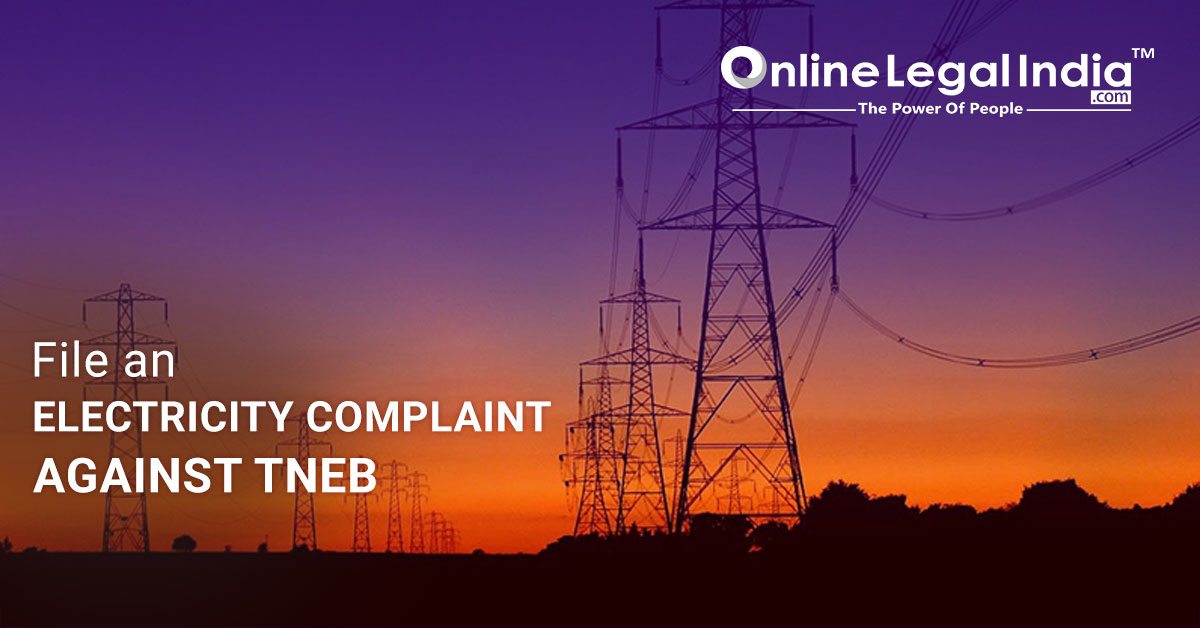Know the Cost to trademark a name and all the fees required
23 Apr, 2024

 By Online Legal India
Published On 22 Nov 2022
Updated On 06 Jan 2023
Category Private Limited Company
By Online Legal India
Published On 22 Nov 2022
Updated On 06 Jan 2023
Category Private Limited Company
In India, forming a Private Limited Company (Pvt. Ltd) is a common approach to get started. It provides founders with benefits such as restricted liability protection, a distinct legal existence, increased credibility, and ease of acquiring external financing. As a result, startups and progressive enterprises who want to take on more risk and expand prefer a corporation form. Under the Companies Act of 2013, it is registered with the Ministry of Corporate Affairs.
The Memorandum of Association of a private firm describes a company's main legal rules and organisational structure. It is a key legal instrument that ensures the company's continued existence. The Memorandum of Association is a statutory document that must be present in every company. The MOA serves as the business charter and establishes and limits a firm's privileges for the benefit of the general public. In addition, the Memorandum of Association outlines the permissible scope of Business operations to offer advice to shareholders, creditors, and other stakeholders. Therefore, when founding your company, you need to draught an appropriate Memorandum of Association to safeguard yourself and your business in the long term.
Depending on the kind of organisation, the format of an MoA is provided in Tables A through E. A corporation can use the table that applies to it; for example, Table A is for companies limited by shares, while Table B is for a company limited by guarantee with share capital, and so on.
MOA Table A The corporation is limited by shares.
MOA Table B The corporation is limited by guarantee & does not possess a share capital.
MOA Table C The corporation is limited by guarantee and has a share capital.
MOA Table D Form of an unlimited liability company.
MOA Table E Form of a limited corporation with share capital.
Private corporations must have the final two letters of their name be "Private Company Registration," whereas public firms must have the last word be "Limited." According to the Companies Act, a business cannot be registered with an objectionable name. Only the circumstances and details of each situation will allow you to determine whether or not a name is suitable.
The memorandum of association must include the state where the company's registered office will be situated. In addition, the domicile of the corporation must be given in order for the Court and the Registrar to identify their respective jurisdictions. There should be a registered office inside a certain domicile, and notification of it should be given either at the time of registration or within thirty days of that date, provided the company does not begin doing business before that time.
This object clause may describe and enumerate an unlimited number of permitted purposes, regardless of whether the organisation actually undertakes all of those actions. From a legal sense, this clause takes precedence. Any conduct that breaches the purposes clause but is not specifically specified in the association agreement is considered ultra vires or outside the company's jurisdiction.
A business managed by shares or by assurance must state how its representatives' liability is limited. This provision has the greatest influence on members. Before the firm may enhance a member's obligation, the member must express written approval.
The Memorandum of Association (MOA) of a corporation with a share capital must indicate the number of shareholdings with which a company will be incorporated and how the capital is divided into fixed-value shares.
At the end of the Memorandum, there should be an association provision expressing the subscribers' wish to become a corporate body. Each subscriber must acquire at least one share of the firm and sign the subscription agreement together with a declaration of the number of shares purchased, according to the subscription clause.
Because it is a commercial document, such as a company's Articles of Association (AOA), it must be properly read. It defines certain responsibilities and rights for both the representatives and the firm and governs how a corporation is operated domestically. In reality, the company's bylaws, or articles of association, outline how directors and other officials are required to carry out their responsibilities regarding the company's administration, finances, and audit. Therefore, every private limited, unlimited, or limited liability business must have its articles and memorandum of an organisation registered.
Section 31 allows companies to change or add to their articles. A corporation cannot give up these powers. The article can be modified to address concerns left unanswered by the memorandum. To make the modification, a specific resolution must be utilised.
|
Company Type |
Ideal For |
Tax Advantages |
Legal Compliances |
|
Private Limited Company |
Businesses with a high turnover rate |
Startup India provides a three-year tax break. Increased depreciation advantages |
Tax returns for businesses must be filed. ROC returns must be submitted. An audit is required. |
|
Limited Liability Partnership |
Businesses that provide a service or have modest investment requirements |
Benefit of Depreciation |
Tax returns for businesses must be filed; ROC returns must be submitted. |
|
One Person Company |
Sole proprietors seeking to minimise their responsibility |
Startup India provides a three-year tax break. Increased depreciation advantages There is no tax on dividend distribution. |
Filing of business returns Limited ROC compliance. |
|
Public Limited Company |
Businesses with a high turnover rate |
Exemptions from taxes under. |
Tax returns for businesses must be submitted. Audits Are Required. |
From the viewpoint of the law, a PLC is considered a different legal entity from its founders. It has shareholders (investors) and directors or company officers. Every individual is considered a corporation employee.
A Public Limited Company is a member-led voluntary organisation formed under company law. It has a distinct legal existence, and its members' responsibility is restricted to the number of shares they possess.
An OPC launched in 2013 is the easiest approach to start a corporation if there is just one promoter or owner. It allows a solo proprietor to continue working while being part of the corporate framework.
An LLP is a distinct legal entity in which partners' obligations are restricted to their agreed-upon contribution. An LLP is formed with the Registrar of Companies under the Limited Liability Act of 2008. (ROC).
A Pvt. Ltd. is a legal person and a juristic personality created under the Companies Act 2013.
Members' personal assets are protected, making it a key preferred perspective for a private limited business. Individual risk is confined to the benefits of an organisation, so they are not paying for personal resources (personal assets).
An organisation has an indefinite existence, which means it has no influence if a partner changes or dies or if any other scenario occurs.
Banks, Angel Investors, VC Firms, and countless other sources of capital consistently choose private limited businesses over proprietorship or partnership firms.
In general, many ideas require initial finance; thus, a private limited company is ideal for startup investment.
Sole proprietors and partnerships pay income tax. In contrast to a partnership or sole proprietorship, a private limited company must pay corporation tax, implying a certain level of commitment.
The private company registration process involves the following steps.
Because the private company registration procedure is entirely online, digital signatures are necessary to file the paperwork on the MCA portal. In addition, all prospective directors & subscribers to the Memorandum of Association (MoA) & Articles of Association must have DSC (AoA).
The name application comprises giving the MCA three prospective names for your firm (of your choosing), from which one will be picked. The names you offer should be unique and represent the company's defining features.
A company's name is important because it establishes the tone for your company and provides the initial impression of your organisation among consumers, business partners, and other stakeholders. That is why you must select three thoughtfully distinct names for your organisation.
The SPICe+ form must be completed and uploaded on the MCA site to apply for private company registration. To fill out the SPICe+ form & submit documentation, the company's director must first register on the MCA portal. After registering, the director can log in and access MCA portal features such as filling out e-forms and accessing public records.
In addition, the corporation must reserve its name by submitting two proposed names in Part-A of the SPICe+ form. The reservation of the name is required since the SPICe+ form will be refused if the business name is identical to the name of an existing or registered company, LLP, or trademark or contains phrases forbidden by the Companies (Incorporation Rules) 2014.
If the SPICe+ form is refused owing to non-approval of the company name, the applicant must re-file another SPICe+ form and pay the necessary cost to reserve a new name. However, once the name entered in Part-A of the SPICe+ form is approved, it will be reserved for a period of twenty days, during which the firm must complete Part-B of the SPICe+ form and submit it online. Then, the applicant must fill out Part B of the SPICe+ form with firm and director information, attach papers, attach DSC, verify the form, and submit it.
The Memorandum of Association or MoA is a charter of any company. As a legal document established at the time of a company's incorporation and registration, it specifies the precise relationship with shareholders as well as the fundamental purposes and other reasons for which the business was founded. Any company may only participate in the activities indicated in its Memorandum of Association's object clause.
The Articles of Association (AoA) establish the ground principles for running the firm. It not only establishes the company's management's duties, rights, and authorities. It might be considered a subsidiary of the Memorandum of Association. The Articles of Association describe the principles that must be followed in order to achieve the company's aims, as mentioned in the purpose clause. The AoA aims to clarify the firm's operations and how a corporation will interact with its multiple stakeholders. It essentially gives information on share capital, share transactions, shareholder voting rights, director hiring, accounting, corporate audit, and so on.
After completing the papers, it normally takes 3 - 5 days for private company registration and obtaining the Incorporation Certificate. This Incorporation certification just confirms that the business was created in India in line with all applicable government requirements. It will also include the CIN number, which refers to the Corporate Identification Number, abbreviated CIN. CIN is a unique identification number assigned to a firm formed under the Companies Act 2013 by the ROC or Registrar of Companies in numerous states under the MCA or Ministry of Corporate Affairs.
The documents required for Private Company Registration are:
The major goal of the MoA is to limit the extent of the company's operations and capabilities. A corporation is only authorised to perform activities that are within the scope of the MoA's authority. Any action taken by the corporation that goes beyond the limits of the MoA is hyper viral. The corporation's super-viral act denotes an act performed by the company that is beyond its capabilities. A business's members and depositors can petition the company tribunal to enjoin the firm from acting in a way that violates the company's Memorandum of Association requirements.

Know the Cost to trademark a name and all the fees required
23 Apr, 2024

How to Register a Brand Name
17 Apr, 2024

How Can You Download FSSAI Certificate?
15 Apr, 2024

Copyright a Business Name Know the Procedure
13 Apr, 2024

Top 10 Law Firms in India
11 Apr, 2024

Consumer Complaint against Tamil Nadu Electricity Board TNEB
30 Nov, 2020

How to Take Legal Action against Mental Harassment in India?
07 Nov, 2020

UPPCL Uttar Pradesh Power Corporation Ltd. Complaint Filing
19 Nov, 2020

How to File a Complaint Online in Consumer Court in India
27 Nov, 2020

Online Complaint Filing against Hero Motocorp
04 Dec, 2020